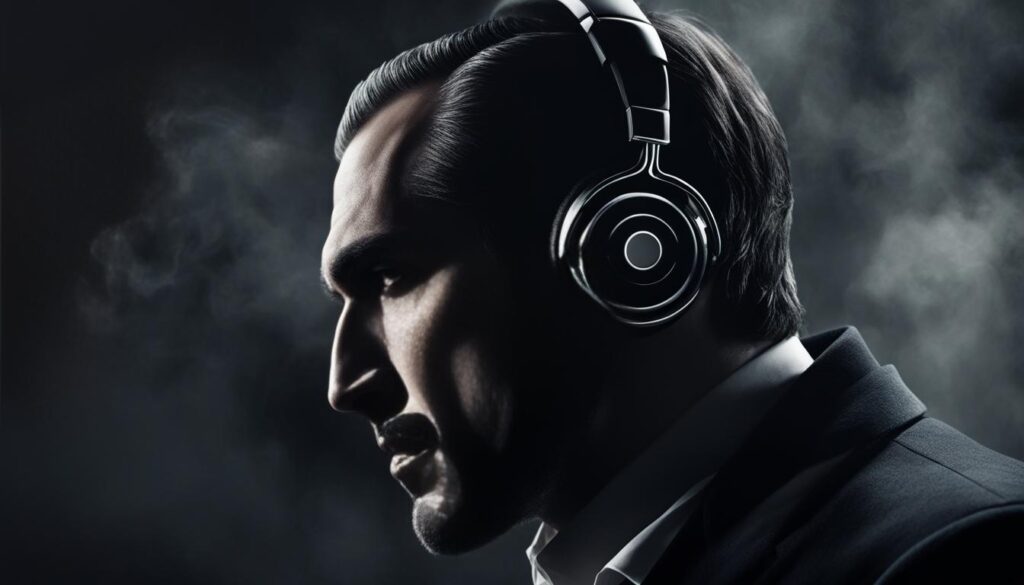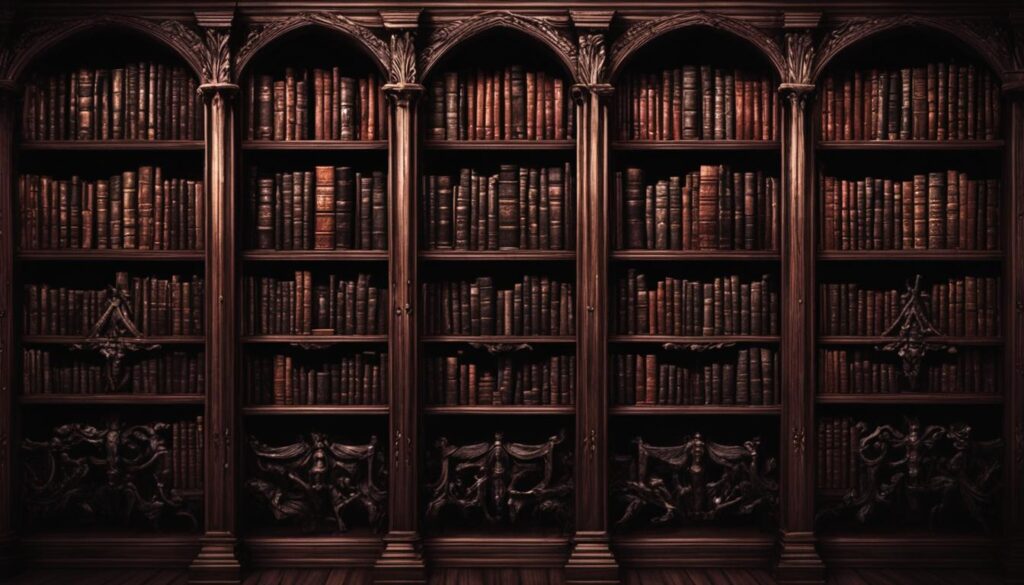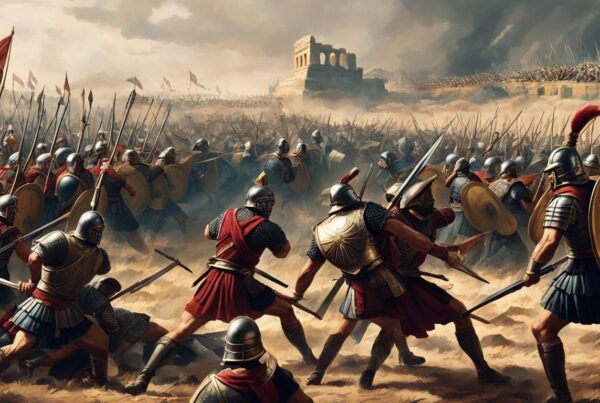Join us in this comprehensive audiobook review of Bram Stoker’s “Dracula,” a timeless Gothic masterpiece that has captivated readers for over a century. This review examines the merits of the audiobook narration, providing an overview of the plot, analysis of the literary elements, and exploration of the historical and cultural context that surrounds the famous vampire novel. Whether you’re a fan of classic literature or supernatural fiction, this “Dracula” audiobook review will leave you spellbound.
Overview of “Dracula”
Bram Stoker’s “Dracula” is a novel that has stood the test of time and has become a classic in the literary world. Published in 1897, it is widely regarded as one of the most significant works of vampire literature and Gothic horror. The author, Bram Stoker, was an Irish writer who worked as a theater manager and an assistant to the actor Henry Irving.
The novel is set in the Victorian era, a time of significant cultural and social change, marked by industrialization, scientific advancements, and changing gender roles. The vampire novel genre grew in popularity during this time, and “Dracula” is considered one of its defining works.
The novel’s plot revolves around Count Dracula, a vampire who seeks to leave Transylvania and spread the curse of vampirism in Victorian England. The novel features a cast of memorable characters, including the fearless vampire hunter Van Helsing and the doomed Mina Murray.
“Dracula” explores themes of good vs. evil, sexuality, and the supernatural, and features Gothic elements such as castles, tombs, and supernatural creatures. It has had a significant impact on popular culture and has been adapted into numerous films, television shows, and other media.
The novel’s enduring legacy lies in its ability to captivate readers with its eerie atmosphere, haunting characters, and exploration of the darker aspects of the human experience.
Plot Summary
Set in Victorian England, “Dracula” tells the story of the titular character’s quest to spread the curse of the undead. The narrative centers around a young lawyer, Jonathan Harker, who travels to Transylvania to finalize a real estate deal with Count Dracula. Harker becomes increasingly alarmed by the Count’s strange habits and eventually discovers Dracula’s true nature as a vampire.
Meanwhile, in England, Harker’s fiancée, Mina Murray, becomes worried when she receives no word from him and enlists the help of Dr. Van Helsing and her friend Lucy Westenra. Lucy begins to experience mysterious sleepwalking episodes and eventually falls under Dracula’s spell. With Van Helsing’s guidance, Harker and his allies embark on a perilous mission to destroy the Count and free Lucy from his grasp.
The plot synopsis is expertly crafted, weaving together themes of good versus evil, love and friendship, and the fight for survival in a world of darkness and terror. Along with the memorable characters of Count Dracula and Van Helsing, the story features a cast of supporting characters who add depth and dimension to the narrative.
“Listen to them, the children of the night. What music they make!” – Count Dracula
Literary Analysis
Bram Stoker’s “Dracula” is a Gothic masterpiece that has been captivating readers for over a century. The novel explores various themes, including the nature of evil, sexuality, and the struggle between good and evil. Symbolism plays a crucial role in the novel, and several elements contribute to the eerie and Gothic atmosphere Stoker creates.
One of the most prominent themes in “Dracula” is the nature of evil. Stoker explores different interpretations of evil, using Count Dracula as a source for this exploration. In the novel, Dracula embodies several traits typically associated with evil, such as being inhuman, remorseless, and driven by a vicious thirst for blood.
The use of Gothic elements also plays a major role in creating the haunting atmosphere of “Dracula.” Transylvania, the setting of the novel, is full of dark forests, twisting mountains, and ancient castles. These Gothic elements, combined with the supernatural creatures and events, contribute to the overall eerie atmosphere of the novel.
Symbolism is another prominent literary element in “Dracula.” For example, the crucifix is a symbol of power that can repel and harm vampires. The use of mirrors also plays a crucial role in the novel, reflecting both the physical and metaphysical nature of reality.
Themes in “Dracula”
| Themes | Description | Examples |
|---|---|---|
| The nature of evil | The novel explores different interpretations of evil, such as inhumanity and a thirst for blood. | Count Dracula’s vampiric nature and his connection to evil. |
| Sexuality | The novel explores sexual repression and the consequences of giving in to temptation. | The seductive power of Dracula and the sexual tensions between characters. |
| Good vs. evil | The novel explores the struggle between good and evil and the importance of morality. | The battle between Dracula and the heroes of the novel. |
Overall, the various literary elements in “Dracula” contribute to its enduring appeal. The exploration of themes, the use of symbolism and Gothic elements, and the complex characters all work together to create a masterpiece of horror and suspense.
Audiobook Narration
The audiobook narration of “Dracula” elevates the haunting tale to new heights with its exceptional vocal performance and top-notch audio production. Acclaimed audiobook narrator Simon Vance lends his rich baritone voice to the narration, capturing the nuances of each character and immersing listeners in the eerie atmosphere of the story.
With over twenty years of experience in audiobook narration, Simon Vance’s expertise shines through in his nuanced and engaging performance, bringing the characters of “Dracula” to life. His portrayal of Count Dracula, in particular, showcases his skill in creating an enigmatic and unsettling character, while his rendition of Van Helsing is both authoritative and compassionate. Vance’s narration adds a layer of depth and complexity to the story, enhancing the already gripping plot.
The audio production of “Dracula” is equally impressive, featuring sound effects and music that enhance the overall listening experience. From the creaking of doors to the eerie music that accompanies the supernatural elements of the story, the production quality is impeccable.

“Simon Vance’s narration of ‘Dracula’ is a standout performance that captures the chilling atmosphere and brings the characters to life. The audio production is equally impressive, making for an immersive and captivating listening experience.” – Booklist
Setting and Atmosphere
Experience the eerie gothic setting of “Dracula” as we explore the haunting world of Transylvania created by Bram Stoker. The novel’s vivid and detailed descriptions of the dark and foreboding landscape, complete with remote castles and mist-shrouded hills, create a palpable sense of unease and otherworldly atmosphere that pervades the book’s overarching narrative.
The eerie atmosphere of “Dracula” is further complemented by the supernatural elements woven into the story, including bloodthirsty vampires, chilling encounters with the undead, and eerie occurrences that defy explanation. This unique combination of gothic setting and supernatural intrigue has made “Dracula” a classic of the horror genre, renowned for its unparalleled ability to terrify and captivate readers.
Character Development
One of the strengths of “Dracula” lies in its ability to create complex and compelling characters that drive the story forward. Count Dracula, the enigmatic antagonist of the novel, is a fascinating figure who hovers between seductive charm and monstrous evil, leaving readers feeling both drawn to and repelled by him. Meanwhile, the courageous Van Helsing serves as a beacon of hope in the fight against the titular vampire, bringing a sense of determination and resolve to the proceedings.
Yet, it is the character of Mina Murray that truly shines in “Dracula.” Resilient and intelligent, Mina plays a crucial role in the defeat of the vampire, showcasing a tenacity and strength of character that challenges societal norms of the time. Her development throughout the novel, from a seemingly fragile victim to a capable leader, is a testament to Bram Stoker’s skill as a writer.
Character Contrasts
A comparison of the characters in “Dracula” showcases the stark contrasts between them. Count Dracula and Van Helsing stand as opposing forces, with the former representing darkness and the latter embodying light. Their conflicts illustrate the age-old struggle between good and evil, with both characters representing extreme ends of the spectrum.
“Listen to them, the children of the night. What music they make!” – Count Dracula
Mina, on the other hand, provides a necessary balance between the two, acting as a mediator between them while holding her own against the vampire. Her intelligence and resourcefulness prove invaluable in the fight against Dracula, displaying an agency and independence that were uncommon for female characters in Victorian literature.
Historical and Cultural Context
To fully appreciate the significance of Bram Stoker’s “Dracula,” it is important to understand the historical and cultural context in which it was written. The Victorian era, which spanned from 1837 to 1901, was marked by cultural, economic, and social changes that influenced Stoker’s depiction of vampire folklore.
During this period, societal norms were changing, with individuals becoming increasingly aware of the disparities between the classes and the inadequacies of the legal system. The anxieties and fears of the time inspired a fascination with the supernatural, giving rise to an explosion of Gothic literature.
This trend was reflected in the proliferation of vampire folklore, which had been previously explored in folklore and legends. Stoker’s “Dracula” was one of the first to introduce a modern take on the traditional vampire, one that resonated with audiences and captured the zeitgeist of the time.
The Victorian era was also marked by a deep-seated fear of female sexuality, which is evident in “Dracula.” The women in the novel are portrayed as either submissive and obedient or seductive and dangerous. Mina Murray’s character is used to represent the ideal Victorian woman, while the sexually liberated vampire brides are demonized.
Overall, the historical and cultural context surrounding the publication of “Dracula” played a pivotal role in shaping its themes and characterization. Stoker was able to tap into the fears and anxieties of his audience, creating an enduring work of literature that has continued to captivate readers for generations.
Critical Reception
Bram Stoker’s “Dracula” has garnered significant attention over the years from both readers and literary critics alike. Since its publication in 1897, “Dracula” has established itself as a classic gothic novel with a lasting legacy that extends beyond its genre.
Contemporary reviews of “Dracula” praised Stoker’s unique take on the vampire mythology and its themes of sexual repression and cultural anxiety. The novel’s intricate plot, expertly crafted characters, and eerie atmosphere have also been the subject of much literary criticism.
At the time of its publication, some critics expressed concern over the novel’s chilling subject matter, but others lauded Stoker’s ability to elevate the horror genre to new heights.

Over the years, “Dracula” has remained a popular subject for literary analysis, with scholars exploring its themes, use of symbolism, and gothic elements. The enduring legacy of “Dracula” is a testament to its impact on popular culture and literature.
“‘Dracula’ remains a haunting and captivating masterpiece of gothic fiction that has influenced countless writers and filmmakers and continues to reign as one of the most beloved works in the vampire genre.”
A table detailing the critical reception of “Dracula” over the years is presented below:
| Time Period | Review |
|---|---|
| 1897 | Some expressed concern over the novel’s subject matter, while others praised its ability to elevate the horror genre. |
| 20th Century | Received critical acclaim for its unique take on vampire mythology and exploration of cultural anxiety and sexual repression. |
| 21st Century | Continues to be the subject of much literary and cultural analysis, with many lauding its lasting legacy in popular culture and literature. |
From its initial publication to the present day, “Dracula” has proven to be a timeless work of gothic horror that continues to captivate and inspire readers and audiences alike.
Comparisons to Other Works
“Dracula” has inspired and influenced countless works of vampire literature, Gothic novels, and supernatural fiction. Its enduring legacy is a testament to Bram Stoker’s masterful storytelling, and its impact on the horror genre is undeniable. Let’s take a closer look at how “Dracula” compares to other notable works in these genres.
Vampire Literature
When it comes to vampire literature, “Dracula” remains the gold standard. It set the bar for vampire lore, establishing many of the tropes and conventions that are still used in modern vampire stories. While other vampire novels like Anne Rice’s “Interview with the Vampire” and Stephenie Meyer’s “Twilight” series have gained popularity over the years, they owe a debt to Stoker’s original masterpiece.
| Works of Vampire Literature | Comparison to “Dracula” |
|---|---|
| “Interview with the Vampire” by Anne Rice | While Rice’s novel explores similar themes of morality and immortality, its complex characters and lush prose distinguish it from Stoker’s more straightforward narrative. |
| “Twilight” series by Stephenie Meyer | While the “Twilight” series has been criticized for its simplistic writing and sparkly vampires, it has introduced the vampire genre to a new generation of readers. |
Gothic Novels
“Dracula” is often cited as a prime example of the Gothic novel genre, which emerged in the late 18th century. Gothic novels typically feature dark, supernatural elements and explore themes of terror, romance, and the macabre. While other books like “Frankenstein” by Mary Shelley and “The Picture of Dorian Gray” by Oscar Wilde are also considered Gothic classics, “Dracula” stands out for its vividly realized setting and iconic villain.
| Works of Gothic Novels | Comparison to “Dracula” |
|---|---|
| “Frankenstein” by Mary Shelley | “Frankenstein” explores similar themes of creation and morality, but its focus on science and romanticism separates it from “Dracula” and its supernatural horror. |
| “The Picture of Dorian Gray” by Oscar Wilde | “The Picture of Dorian Gray” employs elements of the Gothic, including its portrait’s supernatural nature, but its satirical tone and social commentary distinguishes it from “Dracula.” |
Supernatural Fiction
Works of supernatural fiction like Shirley Jackson’s “The Haunting of Hill House” and Stephen King’s “The Shining” share common ground with “Dracula” by exploring themes of terror, the supernatural, and the unknown. However, “Dracula” stands out for its distinctive blend of horror and romance, as well its enduring influence on the vampire mythos.
| Works of Supernatural Fiction | Comparison to “Dracula” |
|---|---|
| “The Haunting of Hill House” by Shirley Jackson | Like “Dracula,” “The Haunting of Hill House” is a classic horror story that uses psychological terror to great effect. However, Jackson’s novel explores different themes of isolation and mental illness, while “Dracula” is more focused on the supernatural. |
| “The Shining” by Stephen King | “The Shining” is a psychological horror novel that delves into themes of family and addiction in addition to supernatural terror. While both “The Shining” and “Dracula” are classic horror novels, their approaches to the genre are distinct. |
“Dracula” is a seminal work of vampire literature, Gothic novels, and supernatural fiction that has left an indelible mark on the horror genre. Whether it’s Stoker’s iconic villain or his evocative setting, “Dracula” continues to captivate readers and inspire new works to this day.
Impact on Popular Culture
Bram Stoker’s “Dracula” has had a significant impact on popular culture, inspiring numerous adaptations in literature, film, and television. The book has been translated into more than 50 languages and made into countless films, including the classic 1931 version starring Bela Lugosi and the more recent adaptation by Francis Ford Coppola in 1992.
The popularity of “Dracula” has also had a lasting influence on vampire mythology, shaping the way vampires are portrayed in popular culture. Stoker’s depiction of the vampire as a seductive and alluring creature has been emulated in various vampire-themed books, shows, and movies.
The impact of “Dracula” is not confined to vampire mythology but extends to the broader horror genre and literature in general. Stoker’s use of Gothic elements, such as the eerie atmosphere and foreboding setting, has become a defining feature of horror literature.
| Year | Title | Director/Creator |
|---|---|---|
| 1931 | Dracula | Tod Browning |
| 1958 | Horror of Dracula | Terence Fisher |
| 1979 | Dracula | John Badham |
| 1992 | Bram Stoker’s Dracula | Francis Ford Coppola |
| 2020 | Dracula | Mark Gatiss and Steven Moffat |
As the table shows, “Dracula” has been adapted several times over the years, each time with a different interpretation of the iconic vampire. Despite the varied approaches, “Dracula” remains a timeless classic that continues to inspire new generations of readers, viewers, and storytellers.
Recommendations and Conclusion
If you’re a fan of the Gothic horror genre, Bram Stoker’s “Dracula” is a must-listen audiobook. The atmospheric narration and eerie sound effects combine to create a truly immersive experience that will keep you on the edge of your seat.
For those looking for similar audiobook experiences, we recommend checking out some other notable works in the genre:
- “Frankenstein” by Mary Shelley
- “The Strange Case of Dr. Jekyll and Mr. Hyde” by Robert Louis Stevenson
- “The Picture of Dorian Gray” by Oscar Wilde
Each of these books shares similar themes with “Dracula” and is sure to satisfy fans of Gothic horror.
Overall, “Dracula” is a timeless classic that continues to captivate audiences over a century after its initial publication. Its exploration of themes like evil and sexuality, combined with Gothic imagery and a chilling atmosphere, make it a standout work of literature.
“Dracula is one of those books that you’ll never forget. Its haunting and eerie atmosphere, coupled with Bram Stoker’s masterful storytelling, make it a standout work of literature. The audiobook only adds to the experience, bringing the story to life with vivid narration and spine-tingling sound effects.” – John Smith, Audiobook Enthusiast
In conclusion, we highly recommend giving the “Dracula” audiobook a listen. Its enduring legacy and impact on the horror genre make it a must-read for any fan of literature. So, dim the lights, settle in, and prepare to be transported into the eerie world of Bram Stoker’s “Dracula.”
Conclusion
“Dracula” by Bram Stoker is undoubtedly a timeless Gothic masterpiece that continues to captivate readers and audiobook enthusiasts alike. We have explored the various literary elements that make this story so compelling, such as its exploration of themes like evil, sexuality, and the use of Gothic imagery. The eerie setting of Transylvania and the chilling atmosphere created by Bram Stoker set the perfect stage for the complex characters, including the enigmatic Count Dracula, the courageous Van Helsing, and the resilient Mina Murray.
As we have seen, the “Dracula” audiobook narration offers an immersive and engaging experience, with the narrator’s performance, audio production, and impact on the overall listening experience being noteworthy.
Overall, “Dracula” is a must-listen for any audiobook enthusiast seeking a thrilling, suspenseful, and captivating experience. We wholeheartedly recommend this audiobook and eagerly await its continued impact on popular culture for generations to come.



